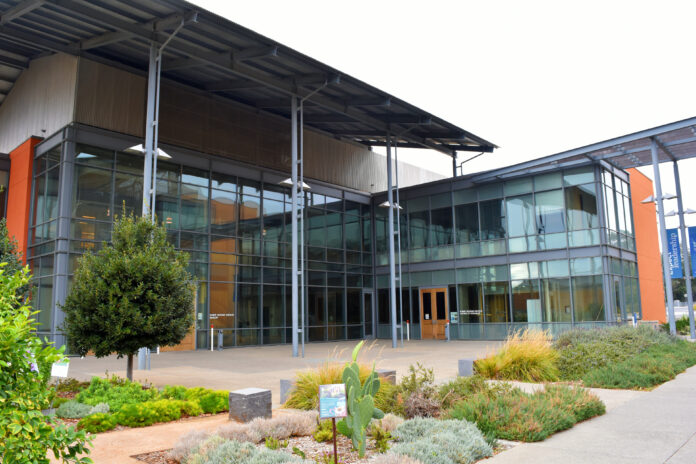The immersive room simulates real-life environments with visuals, air conditions, scents and sounds
By KAYA DO-KHANH — campus@theaggie.org
The Department of Food Science and Technology at UC Davis has launched a new multisensory immersive room for testing sensory science and consumer behavior research, according to a recent press release.
The 360-degree real-life environment experience is located in the Robert Mondavi Institute for Wine and Food Science’s Sensory Building. The room has six video projectors that, according to the release, display high-definition videos on the walls featuring diverse environments like hiking trails and restaurants. The scenery can be changed using an electronic tablet.
The immersive room appeals to the senses in different ways. Controlled heating lamps, misters and fans can adjust the room’s temperature, a variety of scents can be released to alter the smell and sounds that produce spatialized audio can be played through mounted speakers.
Julien Delarue, an associate professor in sensory and consumer science, started working on the project to redesign a pre-existing sensory lab that consisted of standard sensory booths around a year and a half ago. He said that it took almost a full year to complete the remodeling.
Delarue is currently planning to use the room to test how different environmental cues affect consumers’ reactions to food products. His first experiments in the multisensory room will be conducted with energy bars, and he said that he hopes there will be different reactions to the product in a more real-life setting than in a standard lab.
“It’s nothing like a lab, and for me, that’s very important, because that was the goal,” Delarue said. ”It’s really not what you expect. They’re coming to a lab, and then they’re immersed in that environment.”
In regards to the future of the 360-degree multisensory immersive room, Delarue said there is a possibility of installing the same sensory immersive rooms in other locations around campus and even across California. He also said that the immersive room could be used for other departments, such as for creative purposes in design.
“In terms of research, it’s an extremely powerful tool,” Delarue said. “There could be different usage for creativity, design or education.”
Christopher Simmons, the chair of the Food Science and Technology Department, said that this ability to depict life-size environments could be a new way of teaching other food science concepts, such as the inspection of food processing and service facilities or creating virtual tours of industrial facilities and agricultural field sites.
“Going forward, the multisensory immersion room will transform how many food products are evaluated by enabling research related to the interactions between consumers, food, and their surroundings,” Simmons said via email.
Written by: Kaya Do-Khanh — campus@theaggie.org




